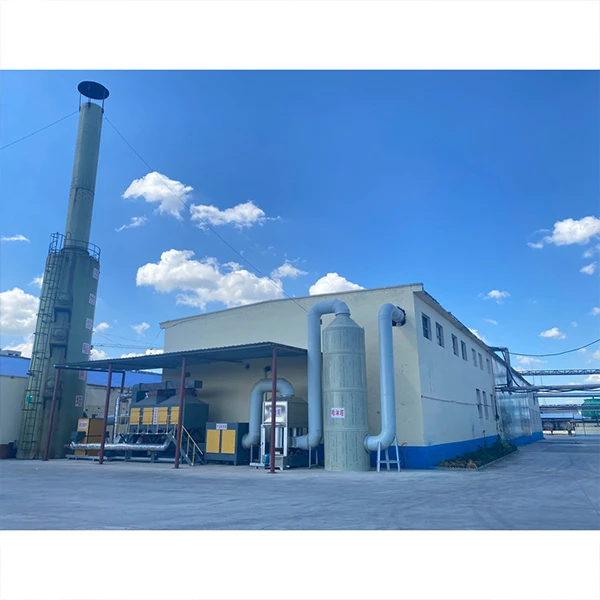Exploring Cellulose Adhesives A Sustainable Solution for Modern Bonding Needs
In an age where sustainability is increasingly becoming a central concern, the search for eco-friendly materials in various industries has led to the exploration of cellulose adhesives. These adhesives, derived from cellulose – a natural polymer found in the cell walls of plants – have gained popularity due to their biodegradable nature, non-toxicity, and excellent bonding properties. This article delves into the characteristics, applications, and benefits of cellulose adhesives, showcasing their potential as a viable alternative to synthetic adhesives.
Composition and Properties of Cellulose Adhesives
Cellulose adhesives are primarily made from cellulose derivatives, such as carboxymethyl cellulose (CMC), hydroxypropyl cellulose (HPC), and microcrystalline cellulose (MCC). These compounds are produced through the chemical modification of natural cellulose, which enhances their adhesive properties. One of the critical advantages of cellulose adhesives is their high viscosity, which allows them to form strong bonds while remaining easy to apply. Additionally, cellulose-based adhesives exhibit excellent water solubility, making them versatile for various applications.
The adhesive properties of cellulose are attributed to its hydroxyl groups, which can form hydrogen bonds with other materials. This capability ensures strong adhesion to a wide range of substrates, including wood, paper, and textiles. Furthermore, cellulose adhesives can be tailored to meet specific requirements by adjusting their composition or incorporating additives, such as plasticizers or fillers, to enhance their performance.
Applications of Cellulose Adhesives
The versatility of cellulose adhesives makes them suitable for numerous applications across various industries. In the woodworking sector, they are used for furniture assembly, lamination, and surface coating. The ability to create strong bonds with wood and other materials ensures durable products without the use of harmful chemicals.
cellulose adhesive

In the paper and packaging industry, cellulose adhesives play a crucial role in producing labels, cartons, and other packaging materials. Their non-toxic nature makes them particularly appealing for food packaging, where safety is paramount. Additionally, cellulose adhesives are used in the manufacturing of disposable products, such as diapers and feminine hygiene products, where biodegradability is a significant advantage.
Textile industries also benefit from cellulose adhesives, which are used for lamination, coating, and backfilling applications. The adhesives provide flexibility and durability to textile products while maintaining the natural breathability of fabrics.
Environmental Benefits of Cellulose Adhesives
One of the most compelling reasons for the rising popularity of cellulose adhesives is their environmental friendliness. Unlike synthetic adhesives, which often contain harmful solvents and chemicals, cellulose adhesives are derived from renewable resources and are biodegradable. This characteristic reduces the environmental impact associated with their production and disposal.
Moreover, the use of cellulose adhesives contributes to a circular economy by promoting the use of sustainable materials. As industries increasingly seek to reduce their carbon footprint, cellulose adhesives offer a practical solution that aligns with these goals. Additionally, advancements in manufacturing processes have made it easier to produce cellulose adhesives efficiently, further enhancing their sustainability profile.
Conclusion
In conclusion, cellulose adhesives represent a promising alternative to traditional synthetic adhesives, offering a blend of excellent bonding properties and environmental benefits. Their versatility across various industries, combined with their biodegradability and non-toxic nature, positions them as a key player in the drive for sustainable materials. As research and innovation continue to advance in this field, cellulose adhesives are set to revolutionize the way we approach bonding in the modern world, paving the way for a more sustainable future. By embracing these eco-friendly solutions, industries can significantly reduce their environmental impact while maintaining high performance in their products.
-
Rdp Powder: Key Considerations for Wholesalers in the Building Materials IndustryNewsJul.08,2025
-
Key Considerations for Wholesalers: Navigating the World of Hpmc - Based ProductsNewsJul.08,2025
-
Hpmc Detergent: Key Considerations for WholesalersNewsJul.08,2025
-
Key Considerations for Wholesalers: China Hpmc For Tile Adhesive, Coating Additives, Concrete Additives, and MoreNewsJul.08,2025
-
Crucial Considerations for Wholesalers: Navigating the World of Construction MaterialsNewsJul.08,2025
-
Key Considerations for Wholesalers Sourcing Additive For Cement, Additive For Concrete, Additive For Putty from Additive Manufacturer Shijiazhuang Gaocheng District Yongfeng Cellulose Co., Ltd.NewsJul.08,2025




